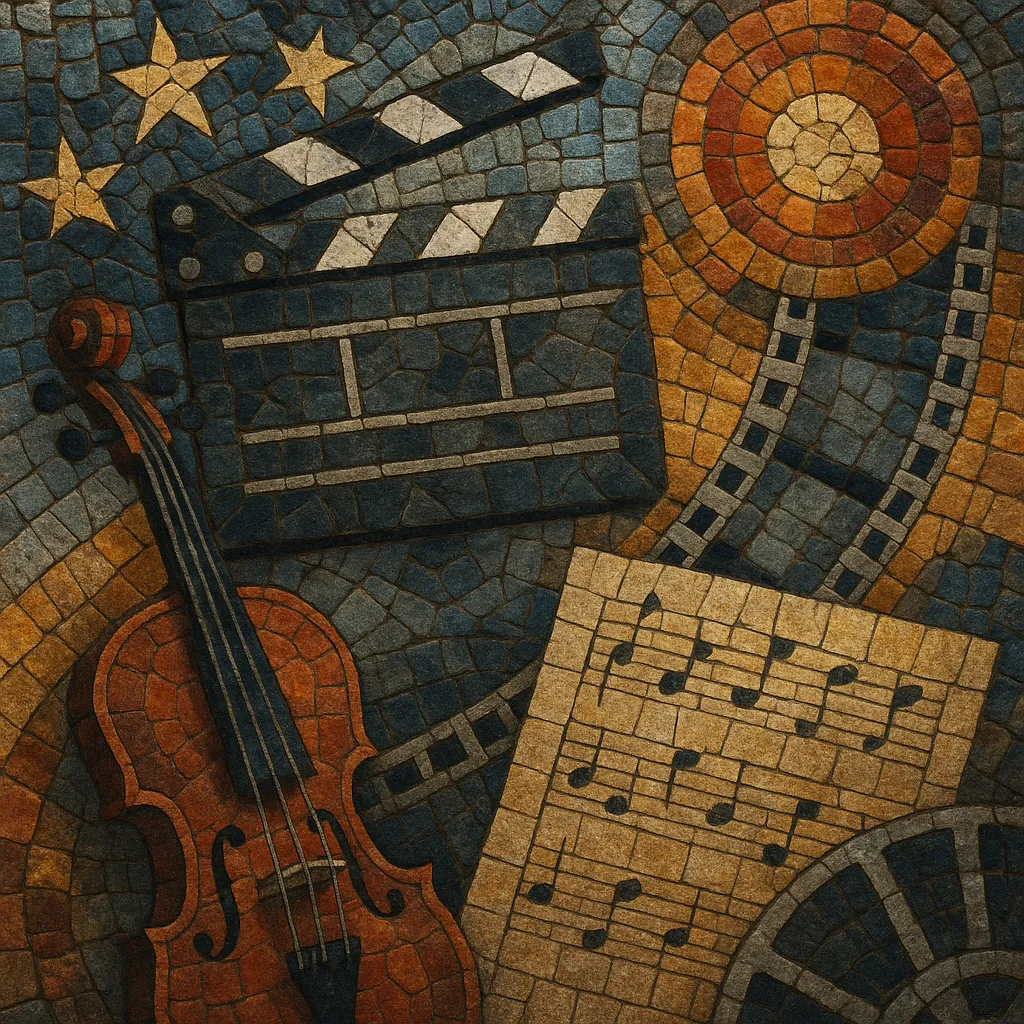
Soundtrack is music created to accompany and enhance visual media such as film, television, and video games. It includes original scores (instrumental or vocal music composed specifically for the picture) and, at times, curated compilations of pre-existing songs.
Stylistically, soundtrack is a meta-genre that can encompass orchestral symphonic writing, jazz, electronic and synth-driven textures, choral forces, popular song, and experimental sound design. Its defining trait is functional storytelling: themes, motifs, harmony, rhythm, and timbre are shaped by narrative needs, character psychology, pacing, and editing.
Common features include leitmotifs for characters or ideas, modular cues that can be edited to picture, dynamic orchestration for dramatic range, and production approaches that sit well under dialogue and sound effects. Because it must synchronize to picture, soundtrack often uses clear dramatic arcs, tempo maps, and hit points.
Before synchronized sound, silent-era films (1900s–1920s) were accompanied by live musicians using classical repertoire, popular songs, or cue sheets. The modern soundtrack emerged with synchronized sound in the late 1920s—famously marked by The Jazz Singer (1927)—and quickly became central to Hollywood storytelling.
Composers such as Max Steiner, Erich Wolfgang Korngold, and Alfred Newman imported late-Romantic orchestral language to film, establishing lush themes, leitmotifs, and symphonic development as industry standards. Studios built in-house music departments, codifying workflows like spotting sessions and cue sheets.
Jazz, pop, and rock entered the palette (e.g., Henry Mancini, John Barry, Lalo Schifrin), while Bernard Herrmann explored modernist harmony and orchestration. International voices (Ennio Morricone, Nino Rota) broadened timbral and stylistic horizons. Electronic instruments and early synths began appearing alongside orchestra.
Synth-driven scores (Vangelis, John Carpenter) defined the sonic identity of sci‑fi and horror, while blockbuster symphonic writing (John Williams, Alan Silvestri, Jerry Goldsmith) revitalized the leitmotif tradition. Soundtrack albums became major commercial products, and game music evolved rapidly from chiptune to cinematic scoring.
Hybrid orchestral–electronic textures (Hans Zimmer and collaborators) became ubiquitous. Globalization diversified idioms, while TV and streaming series normalized film-quality music on smaller screens. Sample libraries and DAWs enabled high-fidelity mockups, and trailer-focused "epic music" emerged as a related commercial niche.

